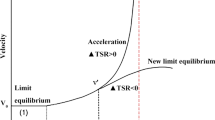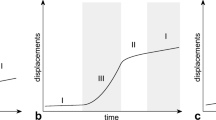Abstract
Data compiled from monitoring the displacement resulting from the Xintan landslide in China was analyzed. The stability of the demonstrated colluvial slope has a close correlation with two parameters, the velocity of the displacement and the angle of the surface vector. The stability trend can be described and evaluated by both the velocity of the displacement and the vector angles. The displacement vector angle, for which there is no substitute, serves as an explicit criterion for the stability of the slope, hence it is significant in the prediction of the catastrophic movement of landslides. A systematic analysis of the features of the vector angles of the surface displacement space and time was performed. The evolving mechanism of space-time and the characteristics of the displacement vector angles were deduced. On the basis of these deductions and by using principles of statistics, the double-parameter threshold for forecasting the stability of the colluvial slopes was established. According to the double-parameter threshold, a calculation and evaluation of stability was completed in terms of the monitoring data of the F-series of points on the Xintan slope. The forecast results coincided with the destabilized timetable, thus demonstrating that the double-parameter criterion has, to a certain extent, precision and practical application for forecasting of landslides.







Similar content being viewed by others
References
Adib ME (2000) Slope failure in weathered claystone and siltstone. J Geotech Geoenviron Eng 126:787–792
Brand EW (1981) Some thoughts on rain-induced slope failure. In: Proceedings of the 10th international conference on soil mechanics and foundation engineering, Londen, vol 3, pp 374–376
Chen WF, Chan SW (1984) Upper bound limit analysis of the stability of seismic-informed earthslope. International symposium on geotechnical aspect of mass and material transportation, Bangkok, pp 284–286
Chen M, Wang L (1992) Grey forecasting on slope deformation and failure. In: Proceedings of the 29th international geological congress, Tokyo, pp 870–871
Chen L, Zhang M (1986) Major landslides along the Yangtze River, China. In: Abstract, AEG National Meeting, San Francisco, p 46
Liu G (1988) Environmental geologic investigation of Xintan landslide. Environ Geol Water Sci 12(1):11–13
Mair RJ (1993) Developments in geotechnical engineering research. In: Application to tunnels and deep excavation. In: Proceedings of the institution of civil engineers, London, vol 93, pp 30–37
Santian GE (1980) Landsliding. Falling and prevention. Science Press of China, pp 71–89
Savage WZ (1986) A model of the plastic flow of landslides. Geological Survey of America, Washington, pp 21–29
Wang S (1999) Monitoring and forecast of the landslides in three Gorge region of the Yangtze River. Geological Press, Beijing, pp 32–84
Wang LS, Zhang ZY, Zhan Z, Chen MD, Wei CQ, Han ZS (1988) On the mechanism of starting, sliding and braking of Xintan landslide in Yangtze Gorge. In: Proceedings of the 5th international symposium on landslides, Lausanne, Switzerland, pp 341–344
Acknowledgments
The study was supported by National Natural Science Foundation of China (40472141) and National Science Foundation of Shandong Province (Y2003E01). The authors would like to offer great thanks to Prof. Sun Guangzhou, Institute of Geology, Chinese Academy of Science, and Prof. Li Tiehan, China University of Geosciences, Beijing, for supplying the practical monitoring data of the Xintan slope. Postgraduates Wang Ronglu, Liuyan and Taojin have done much significant work on the monitoring and data analysis for this study.
Author information
Authors and Affiliations
Corresponding author
Rights and permissions
About this article
Cite this article
Keqiang, H., Sijing, W. Double-parameter threshold and its formation mechanism of the colluvial landslide: Xintan landslide, China. Environ Geol 49, 696–707 (2006). https://doi.org/10.1007/s00254-005-0108-x
Received:
Accepted:
Published:
Issue Date:
DOI: https://doi.org/10.1007/s00254-005-0108-x




